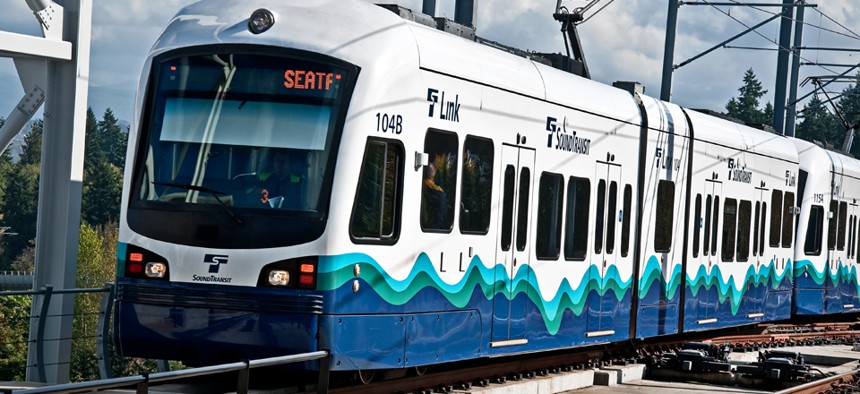7 Charts That Show How Good Mass Transit Can Make a City More Affordable

joyfuldesigns / Shutterstock.com
The rent can be a little high, so long as the ride isn't.
Housing costs are often the first to come to mind when we think about whether or not a city is affordable. If the rent is too damn high, the city is too damn expensive. That's largely true, but transportation costs also have a lot to do with it. HUD actually combines the two numbers into a single "location affordability" index: if those two expenses make up more than 45 percent of your income, the city isn't affordable to you.
The importance of transportation costs in this equation—and, more specifically, the role of transit in reducing these costs—comes into clear focus in a series of new reports on city affordability from the Citizens Budget Commission. Take a look at this CBC chart on average annual rent paid by residents of 22 large U.S. metro areas (New York is highlighted because it was the CBC's primary focus):

By these housing figures alone, you'd expect the cities at the top to be the least affordable, and those at the bottom to be the most. But now here's the chart of the same 22 cities ranked by location affordability:

Now we see that many of the cities with high housing costs also have the best location affordability—particularly Washington, D.C., San Francisco, New York, Seattle, Boston, and San Jose. Each of these cities is in the top ten for affordability despite also being in the top ten for highest rent. In the case of San Jose, high Silicon Valley incomes offset high local expenses. But the key for the five other cities is being among the least expensive in terms of transportation costs:

These five metros—Washington, San Francisco, New York, Seattle, and Boston—share an obvious trait: good public transportation systems. Strong transit makes it possible to reduce car ownership and all the expenses that go along with it, from purchase cost to maintenance to gas to insurance. And so we find that these same cities also rank near the top in terms of both commuter transit share and households without vehicles:

Things get more interesting when we separate location affordability by household types . For a moderate-income household (making 80 percent of the regional median), the five most affordable cities in terms of combined transportation and housing costs are Washington (34 percent of income), San Francisco (37), New York (37), Philadelphia (37), and Los Angeles (38). All five are in the top ten in terms of transportation costs, and three are in the top five:

Now let's take a look at location affordability for low-income families (defined as making half of the HUD area median). Now the top five includes San Francisco (42 percent), Washington (43), Philadelphia (46), Seattle (47), and New York (47). The pattern is clear; major cities with low transportation costs can remain relatively more affordable than others, even if they have higher housing costs:

Flipping the list, we see a reverse effect. The five worst cities in terms of location affordability for low-income families are San Antonio (71 percent), Riverside (71), Jacksonville (64), San Diego (62), and Phoenix (61)—all car-reliant places that rank poorly on annual transportation costs, transit share, and zero-vehicle households. In the case of San Antonio, the high cost of transportation is enough to make the metro area unaffordable to low-income families even though it's the cheapest in terms of annual rent.

None of this is to say that cities don't have lots of work to do when it comes to affordable housing. For low-income families, only two of the 22 cities fall below the HUD location affordability threshold of 45 percent—San Francisco and Washington—and those are right near the line. But if affordability is the ultimate goal, then reducing transportation costs is a key part of the conversation. Strong transit may not be sufficient to make a city affordable, but it's definitely necessary.
( Top image via joyfuldesigns / Shutterstock.com )





